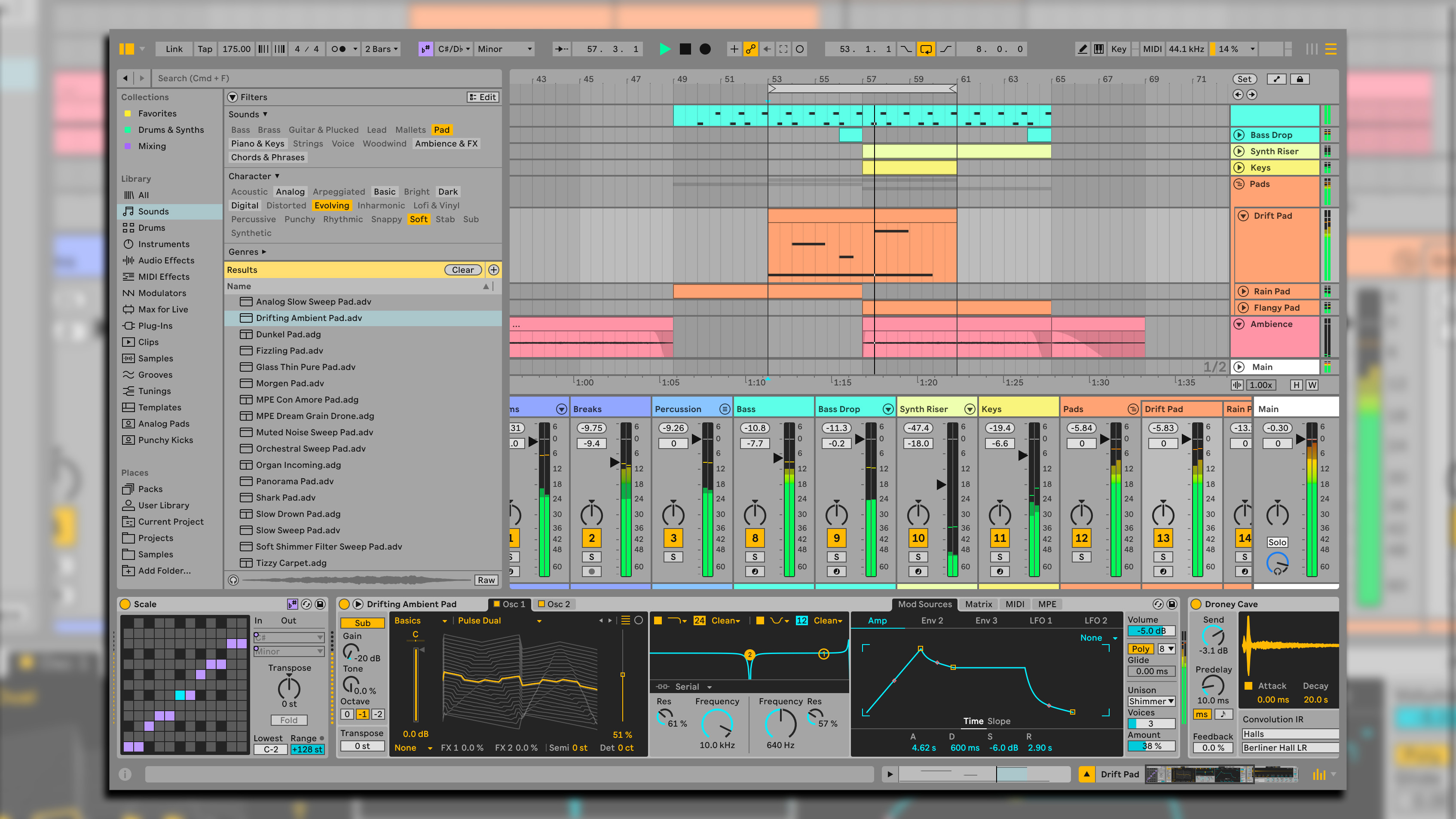
We don’t get quite as excited about DAW updates as we used to – most DAWs are so mature now that they already have pretty much everything you could ask for.
But when Ableton does an update it always adds a decent number of extras. That’s because an Ableton Live update is not as common as it once was (it’s been around three years since the last one) so the Berlin-based developers have time to add a lot with each revision. This is very much true of the new v12 of the DAW.
There’s a great deal more that has been added here, spanning both exciting instruments, effects and sleek workflow additions. With just the addition of the new Meld synth and the Roar effect, Live 12 stakes a claim for introducing two of our inevitable future favourites. But more on those later, that’s just the start of it…
While the version 11 bump was significant, it was more focused on the sheer number of additions, without there being many notable headline grabbers. Live 12 has, from what we can see so far, even more additions.
We’ve been working through them over the last few weeks while the software was still in beta, so – let us be clear – this is not a full review as such, but our early findings on this robust revision, and some in-depth first impressions.
23 years in the making...
Yes, Ableton Live first appeared over two decades ago, and over those years the software has not really changed radically in terms of form or function. So 12 is not, of course, a complete redesign as Ableton doesn’t really do big design changes. The company knows its core users are pretty happy with the overall formula staying put.
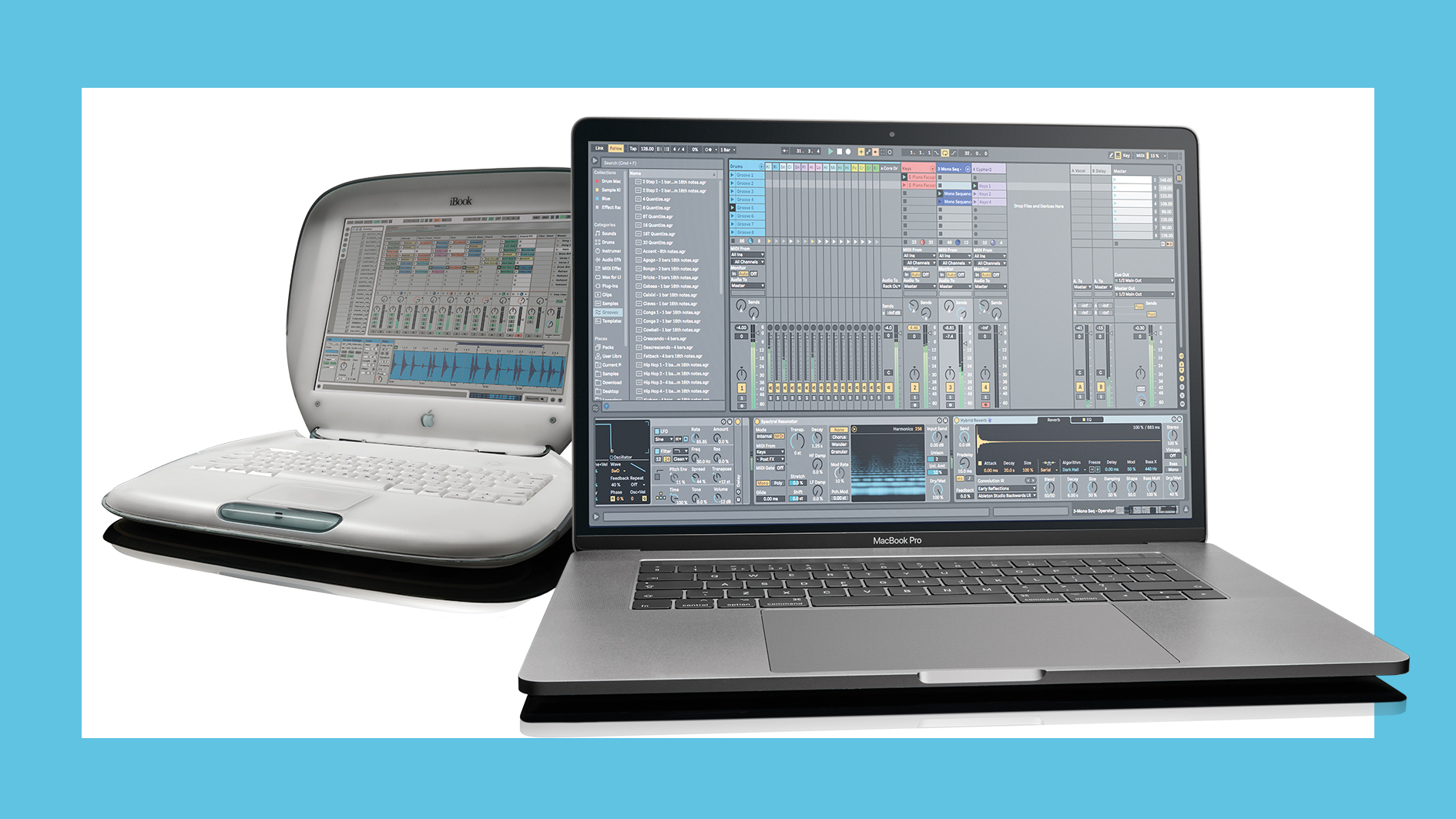
20 years of Ableton Live: a history told by the founders and developers
That foundational clip-oriented idea has been with us since 2001 when Gerhard Behles, Robert Henke and Bernd Roggendorf took version 1 of the software to the NAMM show. While there, Hans Zimmer was so impressed by the software’s real-time audio time-stretching features that he helped spread the word – and the rest is history.
Live’s initial flurry of updates meant that version 4 landed by 2004. This was where Simpler was introduced. It kept getting updated every year until version 7 came out in 2007. Here we met the Drum Rack, many now-core effects and Sampler. Other big additions included audio to MIDI support in v9 and v10 bringing us the Wavetable synth. Updates then began to slow and 2021’s version 11 was the last biggie, and introduced the Hybrid Reverb and Spectral Resonator and Spectral Time among a slew of other additions.
And we get to a dozen
And so to version 12 – or very nearly. Yes we do have to stress that because we have been using the beta, some things will perhaps look different to what you are going to see in this feature compared to the final version. The Mac version of software we have been using does feel stable, though, and – with the latest beta release – pretty complete, with excellent explanations of all the new additions built in (as Ableton always articulates so well).
Finally, and yes we often say this, Live is a true cross-platform Mac and PC DAW. This feature was written using a Mac, but all notes apply to both, and if you’re on PC simply substitute the Command key with the Control key when using shortcuts!
If you are an existing Ableton Live user, we think you’re really going to be thrilled with the updates and additions to the DAW. And if you are a non-user, a couple of these additions might well be the ones to tempt you to join the club.
What's new in Live 12?
The updates to Live 12 are broadly spread across new devices, workflow updates and a refresh of the UI. Yes, we did say it wasn’t a redesign, but Ableton have certainly given the main UI a clean up. So let’s get into everything Live 12.
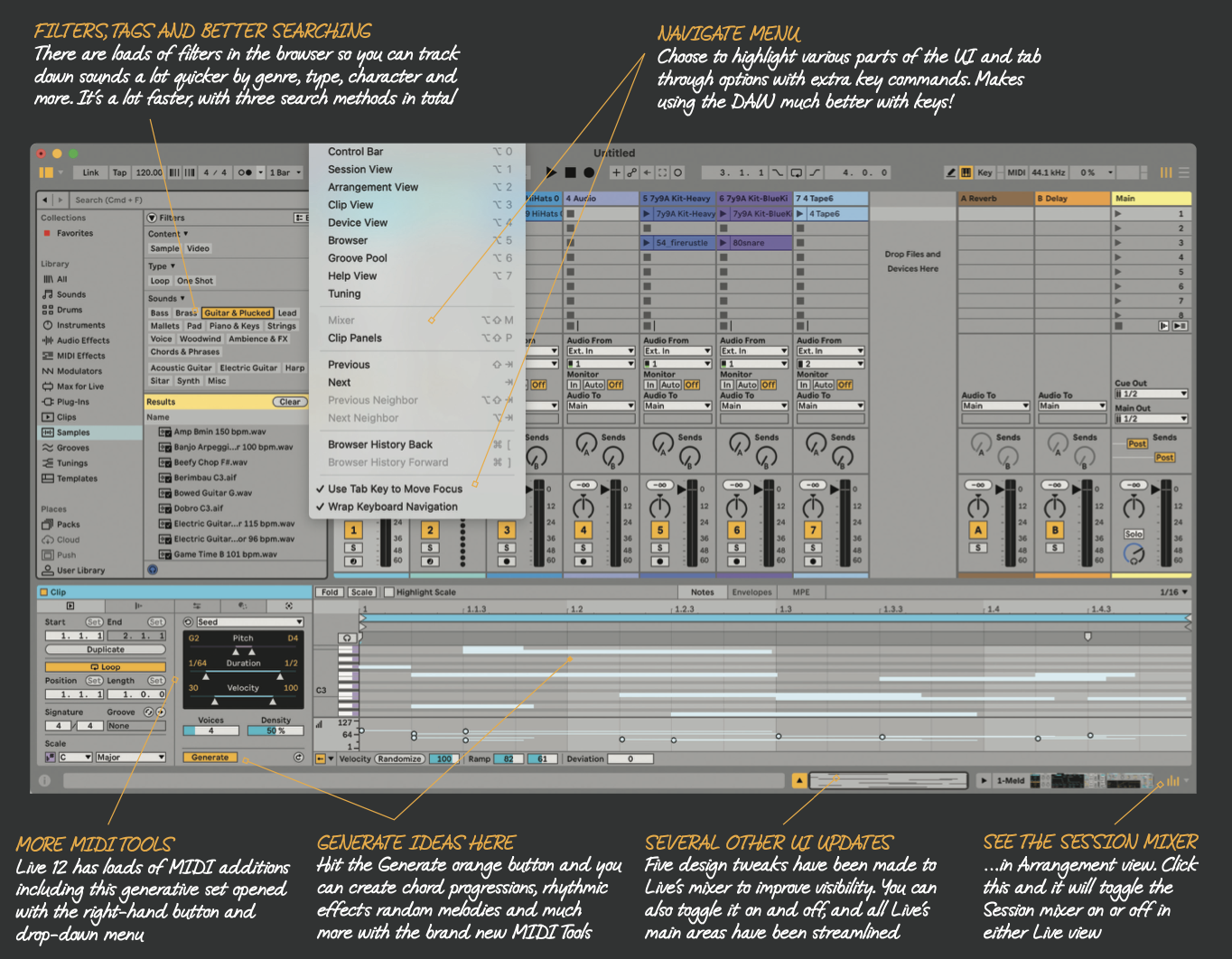
New devices
We’ll start with the most exciting additions – those instruments and effects. The big synth addition is Meld. This is a great-sounding ‘macro oscillator’ synth with bi-timbrality meaning that it can play two different sounds and layer them together. It’s an MPE instrument so you can get even more expressive with it, and its sounds are genuinely very varied, from FM organs to more evolving pads and noisier elements.
This is quite an experimental synth and almost demands that you create your own sounds with its many dual oscillator combinations, accessible from two pop-up menus. WIth oscillator names in the 25 or so on offer being things like ‘Bitgrunge’ and ‘Noiseloop’, you can guess that Meld is capable of quite abrasive, digital sounds as well as more natural ambient washes. It’s also got very extensive modulation and routing, too, so its sounds can be very dynamic and evolving. It’s a great addition, we think, and should be the first port of call for experimentation.
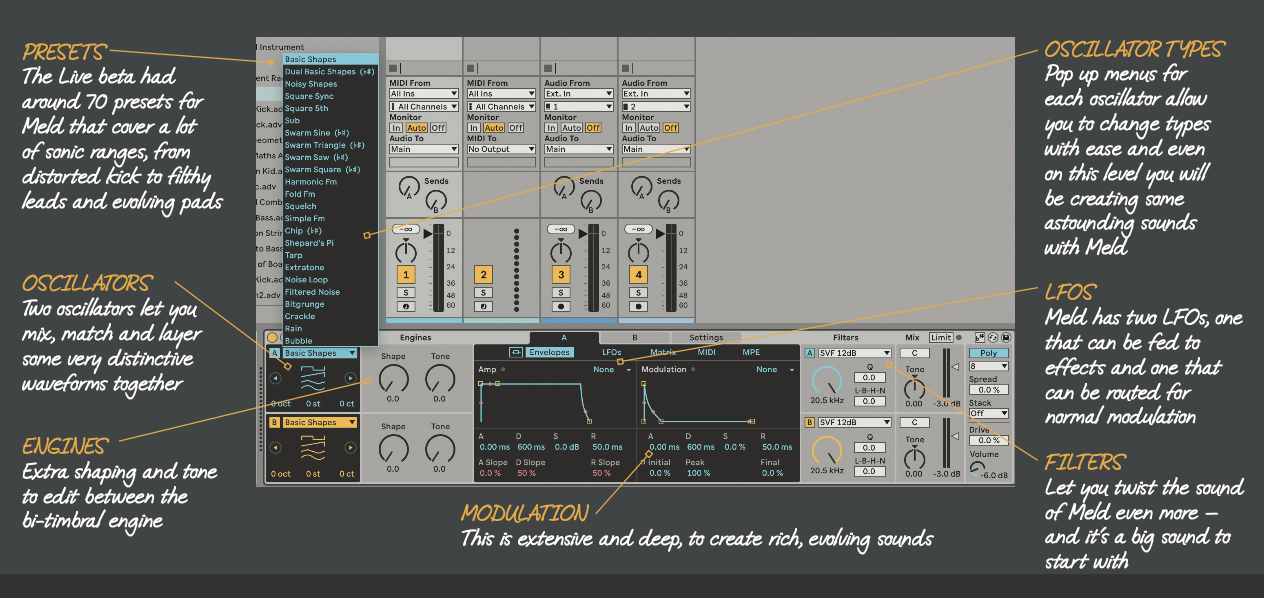
Next is an update to an Ableton Live classic: Robert Henke’s Granulator II. Granulator III updates one of the best ever Max for Live devices, a grain sampler where you add any audio file and it smashes it into grains, letting you do some amazing stuff along the way. You can choose to have your audio split into more grains, loop a certain section, add an LFO to make it jump around; all sorts of craziness.
Granulator III has a new UI with all of your favourite options and a new expressive control that lets you add vibrato, bend notes and generally get a little more dynamic. You can also now record audio directly into Granulator III in real time plus there’s MPE support.
Granulator has always been one of Live’s best sound design tools as you’ll soon come up with something usable or just plain weird. It’s also one of those Live devices where you may not know what you are doing, but pretty much every control has a dramatic effect and this third update is certainly one of Live 12’s highlights.

Roar is another hefty addition to the Live fold, a saturation effect that is capable of subtle colour or bizzare glitchy effects. It features several non-linear saturation curves and three saturation stages. Because you can run these in series, parallel or even as mid/side or multiband styles, you can get some truly eclectic effects. You can use Roar to beef up sounds or utterly destroy them - it really is that flexible.
The best part is the modulation matrix and feedback routing that lets you add motion throughout and you can easily end up with the kinds of effects that just carry on doing their thing long after you think you’re done!
Roar is one of the best additions and along with Meld gives the DAW a couple of weapons for harder styles of music if that is your thing.

MIDI additions
There are certainly lots of MIDI upgrades. First up, the new MIDI Tools are set to be revolutionary for composition. There are both Transformation tools and Generative tools all aiming to take even the most basic of MIDI data on new, unexpected journeys.

The Transformation tools include nine advanced arpeggiation, and articulation tools that let you create different MIDI notes and progressions. Arpeggiate, for example, allows you play the parts of a chord as separate notes; Connect fills gaps between note sections with relevant notes and chords with similar density and pitch; while Ornament adds extra notes such as flams. There are many more so you can stretch and compress notes, add legato patterns, strum, you name it, these MIDI Tools aim to have you covered.
And we haven’t even discussed the generative ones yet. As you might expect, these are more for creating ideas from scratch rather than adjusting what you already have, so Rhythm generates rhythmic patterns; Shape generates melodies based on constraints that you set; Stacks is a chord generator; and finally, Seed is a more random note generator.
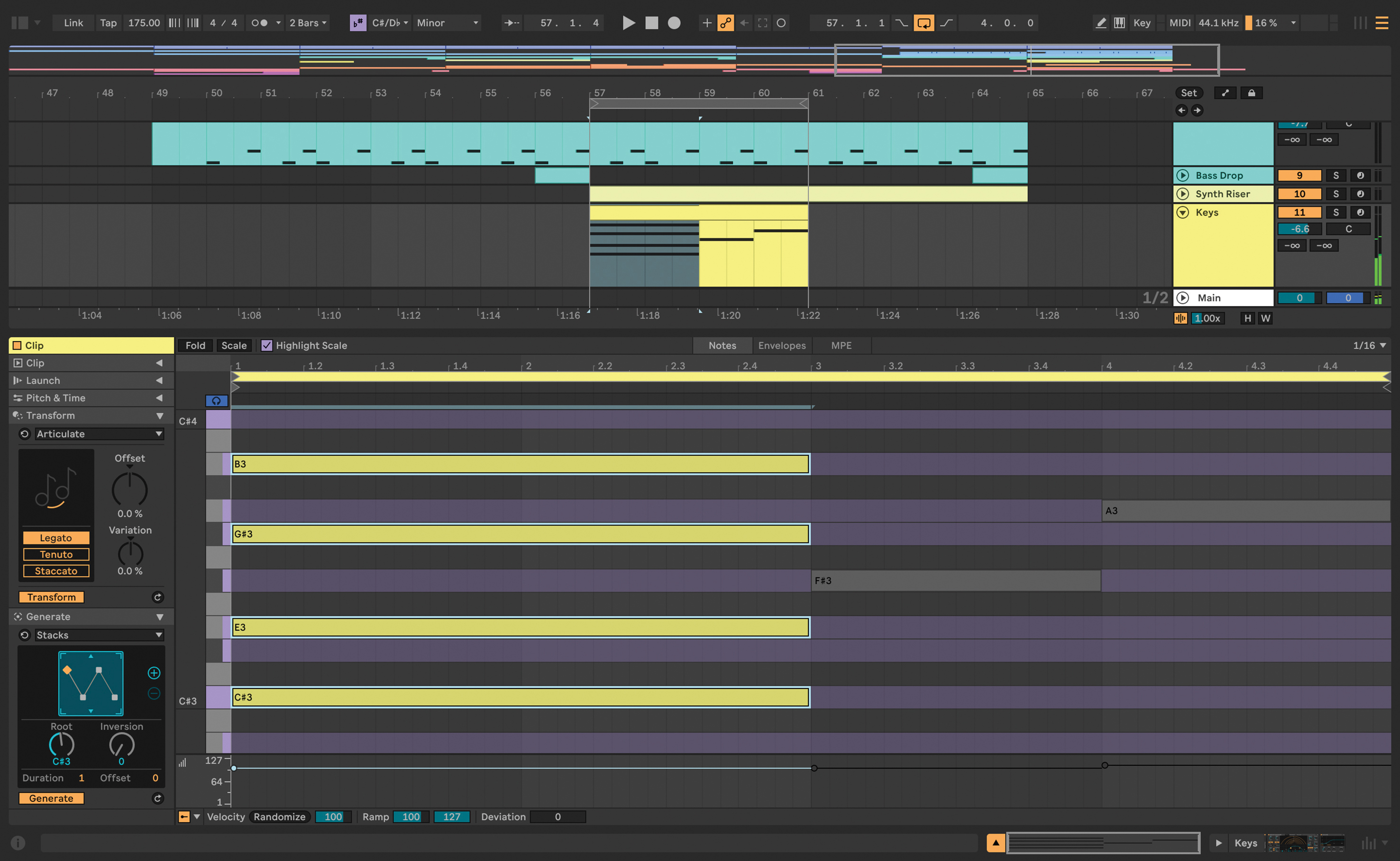
These are great additions just to add a flash of inspiration and help move you along in a project if you are stuck. And more importantly, they are all easy to implement and use. Other MIDI additions include CC Control which is a new utility that allows you to set up easier MIDI communication with external hardware.
These are great additions just to add a flash of inspiration and help move you along in a project if you are stuck
Meanwhile in Clip view, the old Notes view has been renamed Pitch & Time so you can, for example, select pitch options to keep notes in a set scale when editing, flip them and more; or time options to make big note length changes and add a more human/random feel to notes. Finally, there are other key and scale additions that allow you to sync effects with a scale so any MIDI effects that work with pitch can be set to a scale.
Workflow improvements
Live 12 is now better for visually-impaired users as it now works with braille displays and screen readers software like VoiceOver for the Mac and NVDA for Windows. This will only be available for Mac users at Live 12’s launch, with the PC compatibility promised very soon after. Interestingly, Ableton have also pointed out that by implementing these accessibility features “we needed to improve keyboard navigation in Live, something that has benefit for all users.”
This is probably related to the new Navigate drop-down menu, then, which makes it easier to access most of Live’s major features by way of the keyboard. Essentially it allows you to move to different areas of the UI and use the Tab key to move around these parts (you have to switch the mode on or else Live will do its typical switch between Arrangement and Session views as standard).
Lots of new shortcuts have also been added to move around in these different areas so, for example, Tab moves to the next control and Shift Tab to the previous, while Cmd/Option Tab and Cmd/Option Shift Tab move to the next control on the same row. There are further short cuts and controls; you can now solo tracks even when you have the computer MIDI keyboard enabled, for example – all useful ways to navigate if you are more keyboard inclined.
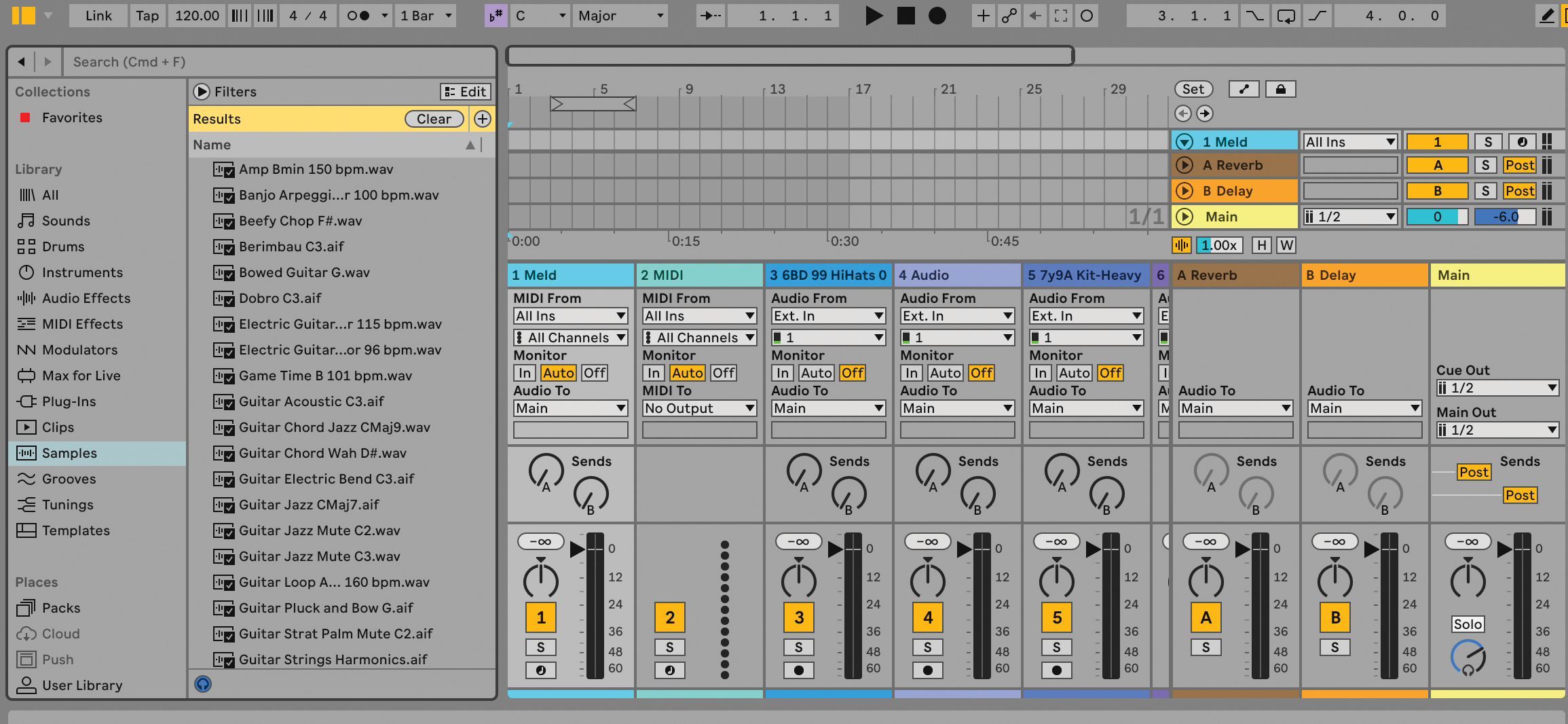
One addition that many will welcome is the ability to see the Session view mixer in Arrangement view, which makes that window in Live look a lot more like a traditional DAW.
Live’s browser has some big additions for v12, with filters added to make searching for sounds easier. You can choose by preset type, sounds by type, or character. This certainly makes homing in on what you need a far slicker experience. You can search by filter or tag, using the search bar or by looking for specific tags. All the instruments, effects, and presets in Live’s Core Library has also been pre-tagged with ’sensible labels’ to make them easier to find, but you can easily create new tags should you wish.
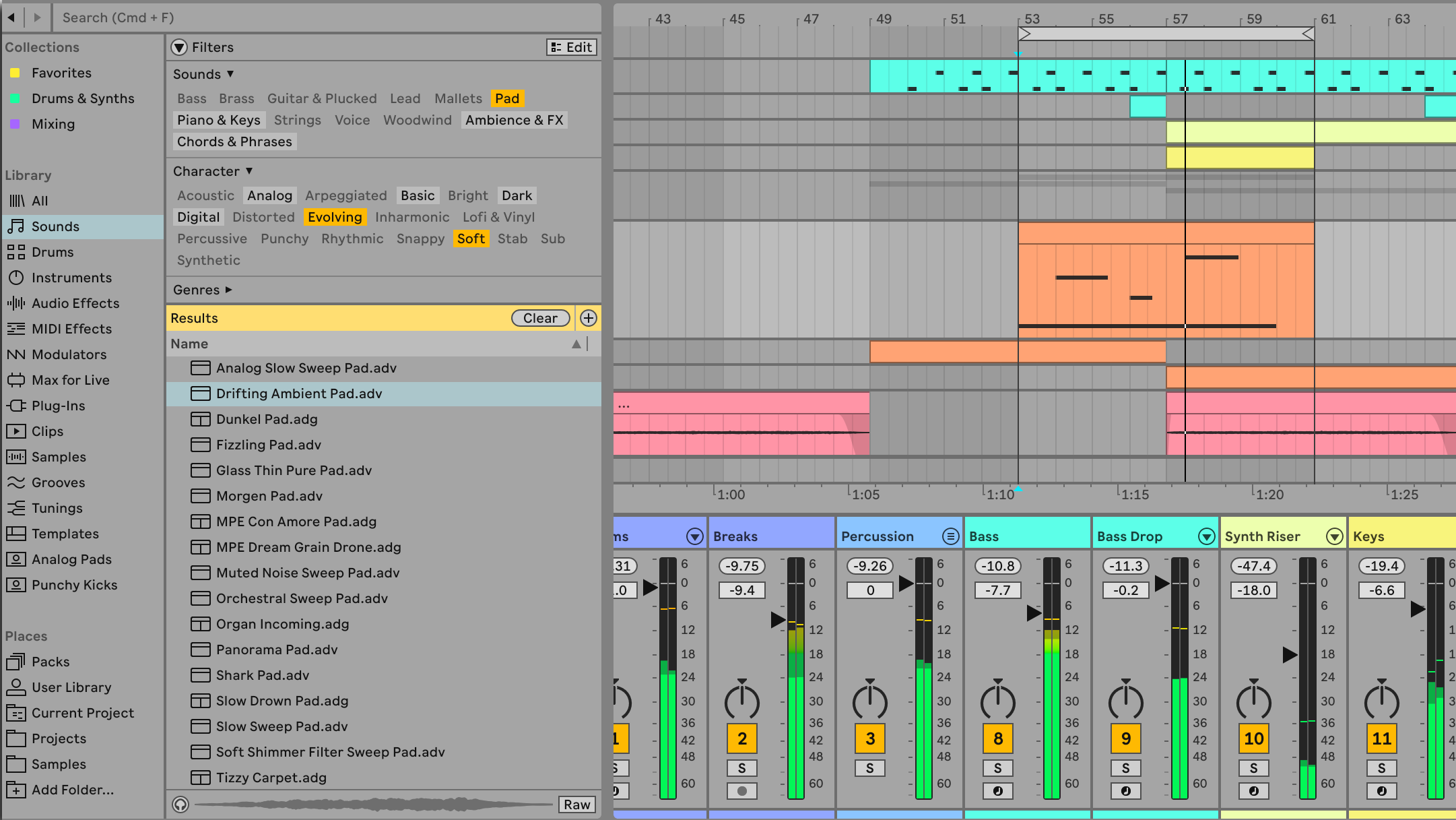
Also useful is a browser history which makes finding previous searches that much easier. Any browser views can be saved as tags or searches. There’s also a new Sound Similarity Search where you start with a sound you like and ask Live to find similar sounds. This is more useful than you might initially think, especially if you are like us, and always seem to be turning to the same sounds all the time!
Additional features
As you’ve probably gathered by now, this is one of the most substantial updates to Live in a long-while, and we’ve not yet covered the whole thing. When it comes to the extras, some of the final bigger headlines come with additions to Ableton’s Packs.
There’s a new Performance Pack which comes with a set of devices for a more custom experience when playing Live live, so you can perform live looping arrangements and have a Performance Control floating window that acts like a controller in its own right and can be fully customised.
The Packs also now include Lost and Found for more ‘unexpected instruments’ like Foley instruments and varied percussion. Plus there’s also a new Beats Tool Pack with 120 Drum Racks, more than 180 loops and effects. Finally, Live Standard gains eight existing Suite Packs, four instruments and an effect, which seems pretty generous.
There’s even more implementations that we haven’t yet covered in detail, but what we’ve surveyed here represents the biggest updates. We think you’ll agree that version 12 is a solid update to Ableton Live. Our full review will follow its commercial release in 2024.
Do you own Live 9, 10 and 11 Standard or Suite? Try out the public Live 12 Beta right now.







